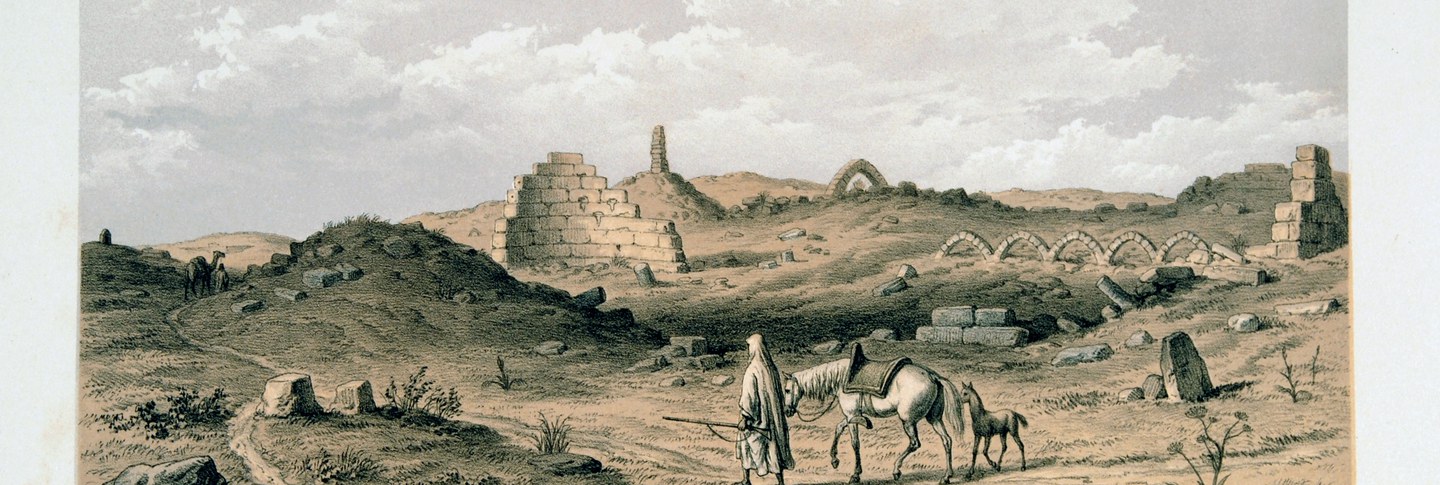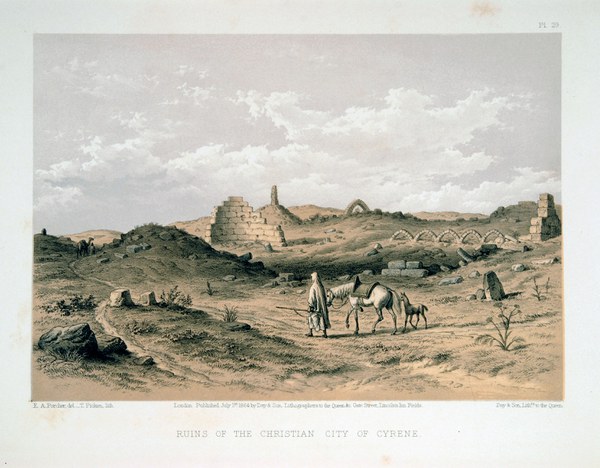Sarah Burke Cahalan and Deb Brown
Historical and archaeological research into the ancient and medieval periods of the Maghreb must confront the legacy of nineteenth-century colonialist enterprises. In honor of the Byzantine spring symposium, "Rome Re-Imagined: Byzantine and Early Islamic North Africa, 500-800," a rare-book exhibition in the Library invites viewers to reflect on the nineteenth-century authors and publications that contributed to this legacy.
Featured item
Captain Robert Murdoch Smith (1835–1900) and Commander Edwin A. Porcher (1824–1878), History of the recent discoveries at Cyrene: made during an expedition to the Cyrenaica in 1860-61, under the auspices of Her Majesty's Government. London: Day & Son, lithographers to the Queen, 1864.
Cyrene is one of the most famous ancient cities of North Africa. It was founded around 630 B.C.E. and abandoned sometime after the Arab conquest of 643 C.E. The extensive ruins of the city and its necropolis left a distinctive mark on the landscape. The ancient name for the surrounding territory, Cyrenaica, was still in use in the nineteenth century, when the region was nominally controlled by the Ottoman Empire. The visible ruins of the famed city attracted a handful of eighteenth- and nineteenth-century European travelers, who described the necropolis and fountains, produced paintings and book illustrations, and dug in various spots for collectible antiquities. Robert Smith and Edwin Porcher were the first team to approach Cyrene with the expressed purpose of "scientific" exploration and mapping of the ancient city. The British government and the British Museum sponsored their project during the years 1860 and 1861. The museum received many of the finds from their excavations.
Porcher himself produced the drawings and watercolors that were later lithographed by T. Picken and produced for publication by Day and Son—it is worth noting that Day and Son, lithographers to the Queen, was the same lithographic firm (soon to become Vincent Brooks, Day & Son) that in 1852 produced the chromolithographs in Gaspare Fossati's Aya Sofia, Constantinople: as recently restored by order of H. M. the sultan Abdul-Medjid, also in the collection of Dumbarton Oaks Research Library. Porcher's original watercolors are now in the collection of the British Museum. The published chromolithographs (one of which is reproduced here) are valuable archaeological documentation of the site before the many excavations and restorations that followed. They also typify the picturesque quality of nineteenth-century images, frequently featuring small details that would increase their charm to casual viewers. In addition, the team used a camera, supplied by the British Foreign Office, but their publication includes only a few black-and-white photographs of statues which were found at the site.

